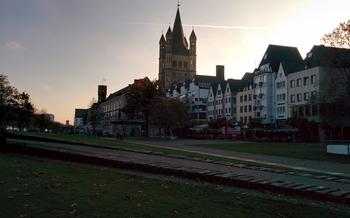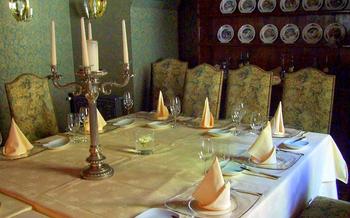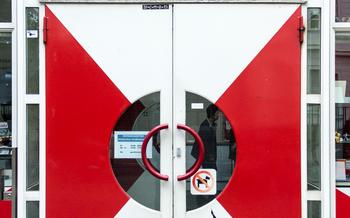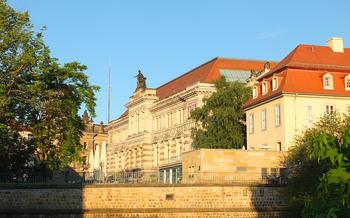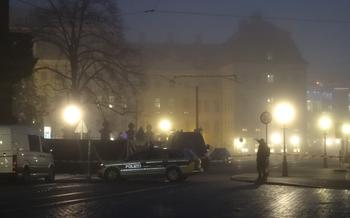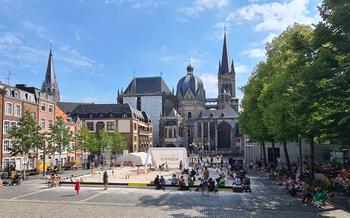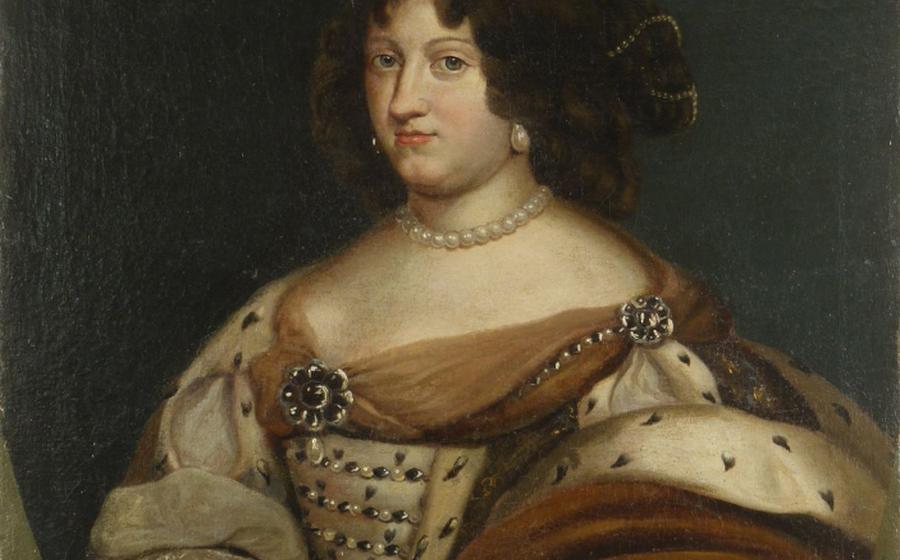
The Historical Museum of the Palatinate in Speyer
- A Journey Through Time: The Historical Museum of the Palatinate in Speyer
- Interactive Displays: Bringing History to Life
- The Romanesque Masterpiece: Speyer Cathedral
- Imperial Regalia: Symbols of Power and Prestige
- The Jewish Community: A Story of Resilience
- The Middle Ages: A Time of Transformation
- The Renaissance and Reformation: A Period of Upheaval
- The Baroque Era: A Flourishing of Art and Culture
- The 19th Century: Industrialization and Social Change
- The 20th Century: World Wars and Reconstruction
- Contemporary History: Shaping the Modern Palatinate
- Educational Programs and Workshops: Engaging with History
A Journey Through Time: The Historical Museum of the Palatinate in Speyer
Nestled in the heart of Speyer, a city steeped in history, lies a treasure trove of knowledge and cultural heritage: the Historical Museum of the Palatinate. Established in 1874, this remarkable institution has become a beacon for history enthusiasts, offering a captivating journey through the Palatinate region's rich and diverse past. The museum's reputation for excellence has earned it recognition as one of Germany's leading historical museums, attracting visitors from around the world.
Conveniently located in the city center, the museum is easily accessible by foot, bicycle, or public transportation. Its impressive building, a testament to the region's architectural heritage, invites visitors to step into a world where history comes alive.
Interactive Displays: Bringing History to Life
The Historical Museum of the Palatinate embraces innovative technology to create an immersive and engaging experience for visitors. Interactive displays bring history to life, allowing visitors to explore the past in a hands-on and interactive way. Multimedia presentations and virtual experiences transport visitors back in time, offering a glimpse into the lives and struggles of the people who shaped the Palatinate region.
Touchscreens, interactive maps, and virtual reality headsets provide a multisensory journey through history. Visitors can explore 3D models of medieval castles, virtually tour the streets of ancient Speyer, and even experience what it was like to be a knight in shining armor. These interactive elements captivate visitors of all ages, making learning about history an exciting and memorable adventure.
The Romanesque Masterpiece: Speyer Cathedral
In the heart of Speyer, towering over the city's skyline, stands the awe-inspiring Speyer Cathedral, a majestic symbol of Romanesque architecture and a UNESCO World Heritage Site. Its construction began in the 11th century and spanned several decades, a testament to the skill and dedication of medieval builders. The cathedral's grand proportions, intricate carvings, and harmonious blend of architectural elements create a breathtaking sight that leaves visitors in awe.
As you step inside the cathedral, you are greeted by a sense of grandeur and spirituality. The soaring nave, supported by massive pillars, leads your gaze towards the altar, where intricate frescoes and stained-glass windows narrate biblical stories and depict scenes from the lives of saints. The interplay of light and shadow, filtering through the colorful glass, creates a mystical atmosphere that transports you back in time.
Beyond its architectural beauty, Speyer Cathedral holds a significant place in German history. It served as the burial place for several Holy Roman Emperors, including Conrad II, Henry III, and Henry IV, whose tombs are adorned with exquisite sculptures and inscriptions. These imperial tombs not only symbolize the cathedral's connection to the powerful rulers of the past but also highlight its role as a center of religious and political significance.
The Historical Museum of the Palatinate, located just a short walk from the cathedral, houses a collection of artifacts and exhibits that further shed light on the cathedral's history and its impact on the region. Through interactive displays and multimedia presentations, visitors can delve deeper into the stories of the emperors, explore the architectural evolution of the cathedral, and witness the events that shaped its legacy.
Imperial Regalia: Symbols of Power and Prestige
The Historical Museum of the Palatinate houses a remarkable collection of imperial regalia, showcasing the splendor and significance of Germany's imperial past. Among these treasures are the imperial crown, scepter, and orb, which were used during the coronations of Holy Roman Emperors. These artifacts, adorned with precious stones and intricate goldsmithing, symbolize the power and prestige of the monarchy that once ruled over Germany.
The crown, crafted in the 10th century, is a testament to the artistry and craftsmanship of that era. Its intricate design features eight gold plates adorned with jewels, representing the eight electorates of the Holy Roman Empire. The scepter, dating back to the 12th century, is a symbol of royal authority, while the orb, crafted in the 12th or 13th century, represents the dominion of the Holy Roman Emperor over the world.
These imperial regalia offer a glimpse into the grandeur and opulence of the imperial court. They serve as a reminder of the rich historical legacy of Germany and the significance of the Palatinate region as a center of political power during the Middle Ages.
The Jewish Community: A Story of Resilience
The Historical Museum of the Palatinate also sheds light on the rich history of the Jewish community in the region. Through artifacts and exhibits, visitors can explore the contributions and experiences of Jewish people who have called the Palatinate their home for centuries.
One of the highlights of the museum's Jewish collection is the Speyer Synagogue, a beautifully preserved 12th-century synagogue that stands as a testament to the vibrant Jewish community that once thrived in the city. Visitors can admire the synagogue's intricate architecture and learn about its historical significance.
The museum also showcases the stories of individual Jewish families and individuals who have made significant contributions to the Palatinate's cultural and economic development. Through personal accounts and artifacts, visitors gain insights into the challenges and triumphs faced by the Jewish community throughout history.
The exploration of the Jewish experience in the Palatinate is a reminder of the region's diverse cultural heritage and the importance of preserving and celebrating the contributions of all its people.
The Middle Ages: A Time of Transformation
The Historical Museum of the Palatinate dedicates a significant section of its exhibits to the medieval period, a time of profound transformation and upheaval in Europe. Visitors can immerse themselves in the world of knights, castles, and the daily lives of ordinary people.
The museum houses an impressive collection of artifacts from this era, including suits of armor, weapons, and tools used by the region's medieval inhabitants. These objects provide a tangible connection to the past, allowing visitors to imagine the challenges and triumphs of life in the Middle Ages.
Interactive displays bring the medieval world to life, with virtual reality experiences that transport visitors to the bustling streets of a medieval town or the battlefields where knights clashed in fierce combat. These immersive presentations offer a unique and engaging way to learn about this fascinating period.
One of the highlights of the museum's medieval collection is a replica of the Codex Manesse, a renowned manuscript that features portraits of minnesingers, medieval poets, and musicians. This beautifully illustrated manuscript offers a glimpse into the vibrant cultural life of the Middle Ages.
The Renaissance and Reformation: A Period of Upheaval
The Historical Museum of the Palatinate dedicates a significant section to the Renaissance and Reformation periods, highlighting their profound impact on the region. During the Renaissance, the Palatinate witnessed a flourishing of art, culture, and intellectual pursuits. Exhibits showcase the region's embrace of humanist ideals, the rise of printing, and the emergence of new artistic styles. Visitors can admire paintings, sculptures, and decorative arts that reflect the spirit of this transformative era.
The Reformation, a religious movement that swept through Europe in the 16th century, also left an indelible mark on the Palatinate. The museum presents artifacts and documents that shed light on the region's role in the Protestant Reformation, including the adoption of Lutheranism by the ruling Wittelsbach dynasty. Visitors can explore the impact of religious conflict and the Thirty Years' War, which devastated the Palatinate and left a lasting legacy on its cultural and political landscape.
The Baroque Era: A Flourishing of Art and Culture
The Baroque period, with its characteristic extravagance and grandeur, left an indelible mark on the Palatinate region. The Historical Museum of the Palatinate features a dedicated section showcasing the artistic and cultural achievements of this era. Visitors can admire exquisite Baroque paintings, sculptures, and decorative arts that reflect the region's opulence and religious fervor during the 17th and 18th centuries.
The museum's collection boasts works by renowned Baroque masters, including Lucas Cranach the Younger, Johann Heinrich Schönfeld, and Ignaz Günther. Their paintings and sculptures capture the essence of the Baroque style, with its dramatic lighting, dynamic compositions, and intricate ornamentation. Visitors can also marvel at the elaborate stucco work and frescoes that adorn the museum's walls and ceilings, creating a truly immersive experience.
Beyond the museum's walls, the Baroque legacy is evident in the region's architectural heritage. Many of the grand churches, palaces, and townhouses in Speyer and the surrounding area were built or remodeled during the Baroque period. These buildings showcase the characteristic features of Baroque architecture, such as curved facades, ornate gables, and elaborate portals.
The Historical Museum of the Palatinate offers visitors a comprehensive insight into the Baroque era's artistic and cultural contributions. Through its collection of paintings, sculptures, and architectural elements, the museum brings to life the splendor and vitality of this dynamic period in the Palatinate's history.
The 19th Century: Industrialization and Social Change
The 19th century marked a period of profound transformation for the Palatinate region, as it embraced the Industrial Revolution and underwent significant social changes. The Historical Museum of the Palatinate in Speyer sheds light on this pivotal era through its captivating exhibits. Visitors can explore the impact of industrialization on the region, witnessing the rise of factories, the development of new technologies, and the emergence of a working class. The exhibits also delve into the changing social dynamics of the time, highlighting shifts in family structures, education, and societal norms. Through interactive displays and multimedia presentations, the museum invites visitors to immerse themselves in the daily lives of ordinary people during this period of rapid transformation.
The 20th Century: World Wars and Reconstruction
The museum's exhibits delve into the tumultuous events of the 20th century, a period marked by world wars and the subsequent struggle for reconstruction. Visitors can explore the impact of the First World War on the Palatinate region, witnessing the devastation and loss it brought. Artifacts, documents, and personal accounts shed light on the experiences of soldiers and civilians during this tragic conflict. The museum also examines the aftermath of the war, highlighting the challenges of rebuilding shattered communities and economies.
The exhibits then turn to the Second World War, a period of immense suffering and destruction. Visitors can learn about the Nazi regime's persecution of minorities, particularly the Jewish community, and the devastating air raids that targeted the region. The museum pays tribute to the victims of these atrocities and explores the region's journey towards reconciliation and healing.
The postwar era is also explored, showcasing the remarkable resilience and determination of the Palatinate people. Visitors can trace the region's path to recovery, from the reconstruction of cities and industries to the establishment of new political and social structures. The exhibits highlight the challenges and successes of this period, providing insights into the region's transformation into a modern and prosperous society.
Contemporary History: Shaping the Modern Palatinate
The museum's contemporary history section delves into the recent developments and issues that have shaped the modern Palatinate. Through interactive displays and thought-provoking exhibits, visitors gain insights into the region's journey from the aftermath of World War II to its current status as a vibrant and prosperous part of Germany.
One of the key themes explored in this section is the region's economic transformation. The Palatinate, once predominantly agricultural, underwent a period of rapid industrialization in the 20th century. Visitors can learn about the rise of new industries, the changing labor landscape, and the impact of globalization on the region's economy.
Another focus of the contemporary history section is the region's political and social evolution. Visitors can trace the Palatinate's journey from being part of the French occupation zone after World War II to its eventual integration into the Federal Republic of Germany. They can also explore the region's role in shaping Germany's postwar identity, its contributions to European integration, and its current challenges and opportunities.
By providing a comprehensive overview of the Palatinate's contemporary history, the museum offers visitors a deeper understanding of the region's complex past and its ongoing transformation.
Educational Programs and Workshops: Engaging with History
The Historical Museum of the Palatinate offers a range of educational programs and workshops that cater to visitors of all ages and interests. These programs provide an opportunity to delve deeper into the museum's collection, explore historical themes, and engage with history in a hands-on and interactive way.
School groups and families can participate in guided tours led by knowledgeable museum educators, who bring the past to life with captivating storytelling and insights. The museum also organizes themed workshops and activities during school holidays, allowing children to learn about history through creative and interactive experiences.
For adults, the museum offers lectures, seminars, and workshops on various historical topics, ranging from the Roman Empire to the modern era. These programs are led by experts in their respective fields and provide an opportunity for in-depth exploration and discussion.
Whether you are a history buff, a student seeking to expand your knowledge, or simply someone who enjoys learning new things, the Historical Museum of the Palatinate's educational programs offer a unique and enriching experience. Be sure to check the museum's website or inquire at the information desk for details on upcoming programs and workshops.

